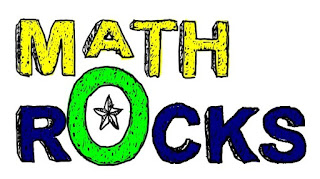Raising the Curve
Yvonne steps up to the front of the room. The anxiety level is high, and there is no turning back. It is her turn to present her findings to the class. She looks around and realizes she is not the spectator this time; SHE IS THE PRESENTER!
We often ask our students to step out of their comfort zone, raise their learning curve, and explore the unfamiliar. As a teacher, my classroom is my sanctuary, I am safe, I am loved, and I am confident of my abilities to lead our young minds. However what happens when you are asked to lead your peers? ANXIETY occurs, that's what! (insert nervous laugh)
It's Now My Turn
Recently a few colleagues and I were asked to create and present to our site staff reading strategies and Kagan structures we could implement in our classroom to raise our student's academic performance. Well, let me tell you this was no easy feat! As we contemplated ideas, brainstormed, and created this professional development opportunity, I realized that although I ask my students to raise their learning curve every day and explore the unfamiliar- I truly do not ask this of myself.Once this experience was over, I was left with one simple question... Where do I go from here?
"YOU HAVE TO GO WHOLEHEARTEDLY INTO ANYTHING IN ORDER TO ACHIEVE ANYTHING WORTH HAVING." -Frank Lloyd Wright
So How Do We Raise Our Learning Curve?
Raising our learning curve is actually a lot easier than we think.
First, we should be open to trying out new things in our classroom. Our students benefit from the shake-up we give them by doing this. Because we can sometimes fall prisoner to our routines; learning something new and putting it into action can come with great benefits.
Second, allow yourself time to make mistakes with whatever it is you are trying out. That is how we learn best- Trial and Error. Doing this will lower your anxiety level since you are already mentally preparing yourself for the bumps that may lie ahead.
Finally, once you do feel comfortable, share your ideas with someone else. As teachers, we are continually looking for the next best strategy in teaching, so why not share the wealth with those around you! Trust in your abilities to lead not only your students but your team.
Lead By Example
After our training, I returned to my class re-energized and ready to tackle something new. During our professional development, my colleague, Rocio Carmona, shared a strategy she uses with her students to incorporate active reading into her daily routine. Therefore, I did what I previously shared with you; I TRIED SOMETHING NEW! Did it go as perfectly as I had hoped? No, but this doesn't mean that my students and I won't perfect this over time, quite the opposite, as I continue to incorporate this into my weekly routine, my students will master it and the benefits they will gain from this active reading strategy will prove rewarding. The following is a clip of what this looked like on our very first try.
Climbing the mountain herself,
Yvonne Milian















